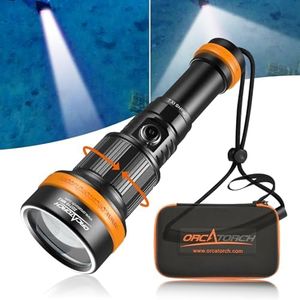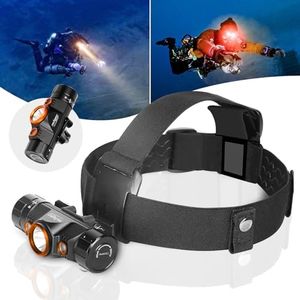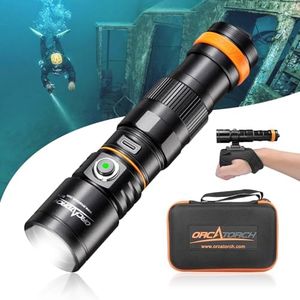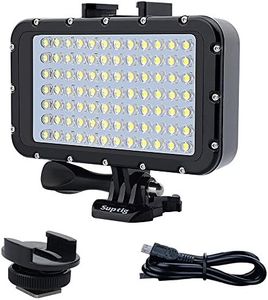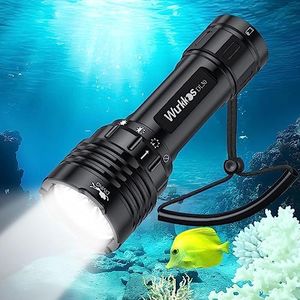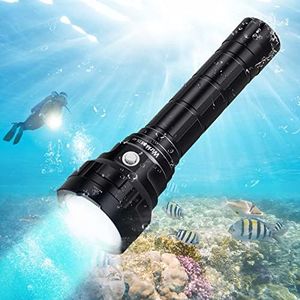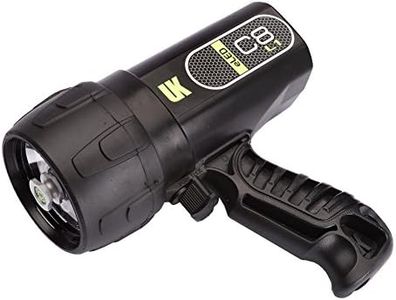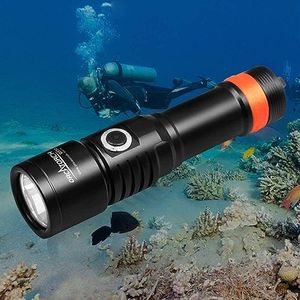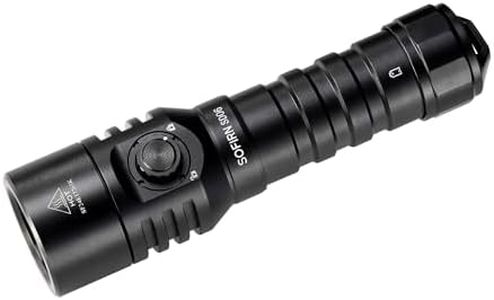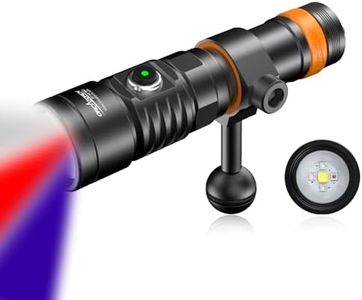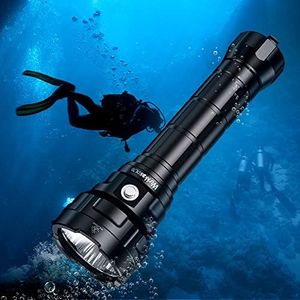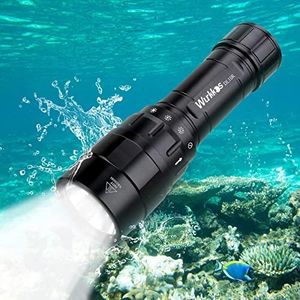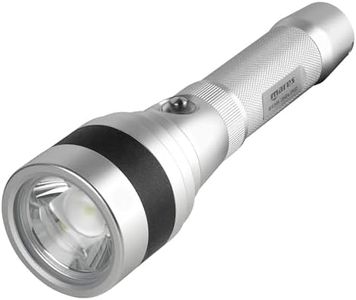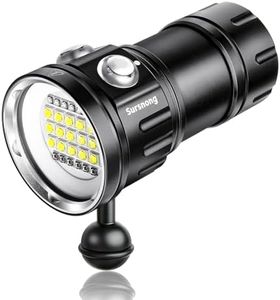We Use CookiesWe use cookies to enhance the security, performance,
functionality and for analytical and promotional activities. By continuing to browse this site you
are agreeing to our privacy policy
10 Best Scuba Diving Lights
From leading brands and best sellers available on the web.Buying Guide for the Best Scuba Diving Lights
Choosing the right scuba diving light is crucial for safe and enjoyable dives, especially in dark, deep, or murky waters. The right light not only improves visibility but also helps you observe marine life, read your instruments, communicate underwater, and avoid hazards. It's essential to think about where and how you will be diving—are you doing night dives, exploring wrecks, or just want a backup light? Understanding the key specifications of scuba diving lights will help you select one that fits your needs and ensures your underwater adventures are both safe and illuminating.Brightness (Lumens)Brightness, measured in lumens, tells you how intense the beam of the light will be. This is important because low-light or night diving requires a strong beam to help you see clearly. Lights with lower lumens (about 200-600) are good for clear tropical waters or as a backup. Mid-range (600-1500 lumens) works well for most recreational night dives. High lumens (1500+) are best for technical dives, deep dives, or exploring caves and wrecks. Consider where you will dive and how much visibility you need to pick the right brightness.
Beam AngleBeam angle describes how wide the light spreads. A narrow beam (hotspot, typically 8-20 degrees) shines farther and is best for looking into holes or signaling. A wide beam (flood, 60+ degrees) lights up larger areas and is ideal for closer work or photography. Choose a narrow beam for exploring or signaling, and a wider beam if you want a broad field of view or are taking photos.
Battery Type and LifeBattery type and life tell you how long the light will work between charges or battery swaps, which is crucial for longer or repeated dives. Lights may use disposable batteries (easy to replace but less eco-friendly) or rechargeable ones (cheaper over time and more convenient). Battery run time can range from under an hour to several hours, depending on brightness and mode. Pick a light with enough battery life for the longest planned dive and think about recharging or swapping batteries between dives.
Waterproof Depth RatingDepth rating is the maximum depth at which the light will function properly and not leak. This is critical because exceeding the depth rating can cause the light to fail. Entry-level lights might be rated for 30-60 meters (about 100-200 feet), while professional models can go much deeper. Always choose a light that is rated deeper than your usual diving depth to allow for safety margin.
Size and WeightSize and weight affect how comfortable the light is to handle and carry during a dive. Bigger lights often have more power or battery life, but can be cumbersome, especially for travel or if you prefer streamlined gear. Smaller lights are easier to stow as spares or backups. Think about how you’ll carry the light and whether you need a compact backup or a larger primary light.
Switch TypeSwitch type, such as twist, push button, or magnetic, determines how easy it is to turn the light on or switch modes—especially while wearing gloves. Some switches are easier to control with one hand or are more resistant to leaks. Pick a switch type that feels secure and is easy for you to operate during a dive.
Mounting or Carrying OptionsMounting or carrying refers to how the light is attached or held, such as handheld, mounted on a helmet, or clipped to a BCD. Handheld is most common for primary lights, but mounting options may be useful for hands-free operation. Choose a carrying method that matches your style of diving and ensures the light is always accessible.
